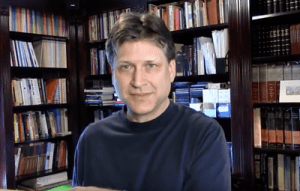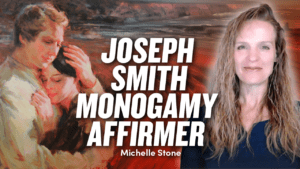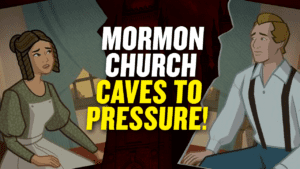 Continuing our discussion with preeminent Joseph Smith historian Dan Vogel, we dive deep into explaining the authorship of the Book of Mormon including these topics:
Continuing our discussion with preeminent Joseph Smith historian Dan Vogel, we dive deep into explaining the authorship of the Book of Mormon including these topics:
- The credibility of the Book of Mormon Witnesses
- Theories around Entheogens (Hallucinogenic substances) and the founding of Mormonism
- Kinderhook Plates
_____________________________________
- 1066-1067: Dan Vogel – Theories of Book of Mormon Authorship
- 1068-1069: Dan Vogel – The Book of Mormon as “Revelation” Instead of “Translation”
_____________________________________
Links mentioned during our interview:
- Naked Mormonism Podcast on Joseph Smith’s Plagiarism
- Naked Mormonism Podcast on Book of Mormon Versus Reality
- 268-270: Dr. Michael Coe – An Outsider’s View of Book of Mormon Archaeology
- Joseph Smith, Captain Kidd Lore, and Treasure-Seeking in New York and New England during the Early Republic – by Noel Carmack
- Joseph Smith, Captain Kidd, Cumorah, and Moroni – by Grant Palmer
- The Telephone Game: Evolving Misinformation Connecting Joseph Smith, Captain Kidd, and the Comoro Islands – by Mary Ann
- New Approaches to The Book of Mormon – by Brent Metcalfe
- CES Letter Discussion on Maps
- Anti-Universalist Rhetoric and the Book of Mormon – by Dan Vogel
- Dan Vogel’s Youtube Channel
- Joseph Smith – The Making of a Prophet – by Dan Vogel
- MormonThink’s Discussion of Book of Mormon Anachronisms
- MormonThink’s Discussion on the Kinderhook Plates
- Mark Twain’s Thoughts on The Book of Mormon
_______________________________________
Part 1 – We discuss how the Magical Worldview created fertile ground for ‘spiritual’ experiences of the early leaders of the Church:
Part 2 – We discuss theories around Entheogens and the founding of Mormonism:
Part 1
Part 2




9 Responses
I listened to all six installments and once again found them to be a very difficult slog. I think I would have much rather read an edited transcript because Mr. Vogel’s ideas are solid even when they are masked behind a halting, snorting, and somewhat confused presentation. We the listeners have to cut him some slack, though, because he’s dealing with a broad range of topics, names, & dates and it’s tough to have them all on the tip of one’s tongue.
I wanted to toss in a couple of passing comments on stuff raised somewhere in the 6 sections:
Tumbaga – Mr. Vogel mentioned that the apologists like to use Tumbaga as the alloy of the golden plates in order to get the weight down closer to the described weights of 40-60 lbs. So they pounce on a Tumbaga alloy containing only 3% gold and the rest copper or silver. As Mr. Vogel correctly points out, such a high copper alloy would not only tarnish green, but it also could not ever be “gold” in color. If it were only 3% gold and the rest either copper or silver, it would slide between red and white in color in polished form, never yellow, depending on how much silver was in the mix in relation to copper.
The biggest point I’ve gleaned from all of Vogel is his daisy chain method of reasoning in constructing his arguments. This is very important, I think, and should be articulated more clearly. He goes from point to point in evidence using each preceding point to construct his explanations for how each successive point should be viewed. For example:
* The Book of Mormon is not a historical record because of a million anachronisms, plagiarisms, scientific absurdities and other problems,
– Because it’s not a real historical record, Joseph Smith could not have translated any real source record, whether heaven sent or dug out of the ground.
– Therefore the golden plates could not have existed.
– Because the golden plates did not exist, the folks who thought they hefted them in the bag must have hefted something, therefore prop tin plates are required.
– Those witnesses who thought they saw something must have seen them in visions, as many admit.
– Thus no physical sealed portion of the golden plates existed, which explains why their descriptions of it differ.
I think that’s a very sound way to attack the many confusing and often contradictory pieces of Mormon history.
When I look for Mr. Vogel’s book, Joseph Smith: The Making Of A Prophet, on Amazon it is only available from 3rd party sellers for over $300. I’d love to read the book but not for that price. Can the book be purchased anywhere else?
Our blog description above includes a link to a free online version of the book
Signature Books has a free complete online version of the book here:
https://signaturebookslibrary.org/joseph-smith-the-making-of-a-prophet/
Here’s a question that occured to me while listening to Dan’s interviews: As I understand, the Book of Mormon manuscript was full of misspellings and other errors. If, according to the “new model” where Joseph saw the words in the stone, why would they have been misspelled? I gained a lot of understanding from Dan’s interviews, and I listened to all of them, regarding the mindset and character of many of the key players in the founding narrative. It really helped bring all the facts together in a cultural and religious context. Thanks Dan and John.
Because neither Smith nor Cowdery (or any of the other scribes) could spell very well. So if Smith spoke a word, and asked Cowdery to speak it back as confirmation, Smith would have no way of knowing if Cowdery’s spelling was correct or not, only that Cowdery repeated the same word back that Smith had spoken first. Even if Smith later read the transcript to check for errors, his spelling skills were so iffy that he still wouldn’t know what the right spelling was. To him Cowdery’s guess was as good as any.
Of course, the logic behind the whole “appearing” words methodology that modern LDS like to lean on is absurd. You’ll encounter it a lot when discussing the “horses, chariots, steel, elephants” errors in the book. Modern apologists like to dismiss all of these mistakes by saying that “horse doesn’t really mean horse” or “Nephi only thought that a strange new American animal looked like a horse so he wrote horse” or “when Joseph Smith encountered an animal in the text, his mind flashed with the image of the animal (such as elephant) and if Joseph was unfamiliar with the animal (such as with curelom or cummon) he transliterated the Nephite word”. Never mind that the 2nd and 3rd explanations are incongruent with each other, none of them make much sense.
Because what did Smith “see” whenever he encountered a proper name? He couldn’t “see” an image of Coriantumr’s face, he couldn’t make any sense of the reformed egyptian squiggle, he could only “see” the name spelled out or “hear” it spoken to him in his mind’s ear in order to speak it to Cowdery. Therefore it all had to pass through the corrective filter of god’s power before Smith could speak it. And why would God allow his filter to speak the wrong word even if Nephi wrote “horse” when he encountered a “llama”. Why couldn’t God have instructed Smith to sound out l-l-a-m-a if he didn’t know what a llama was, just like he would have to spell out Coriantumr for Cowdery to write down. There are far more personal names and place names in the Book of Mormon than there are wrong animals. Getting the animal right surely was worth the effort if it saved 190 years worth of eye-rolling over such stupid mistakes.
John Dehlin is behind the times I’ve bee. Saying Dan is the top Joseph Smith scholar for almost 20 years (I’m kidding John, sort of, lol). Hearing Dan Vogel was the highlight of Sunstone back then in my early 20s. He had the largest influence on where I ended up religiously by far. That said anyone who wants to buy the The Making of a Prophet from me for $800 can do so. Seriously these interviews are great. They are sort of a throwback to when I really enjoyed Mormon Stories, not that their still not good it’s just the broadened subjects are not as interesting to me.
Wow! Thank you so much, John and Dan, for all of these podcasts. I’ve listened to all of John’s conversations with Dan Vogel (I’m listening to the last one (#1071) right now. So much information. I’ve been studying for the past several years, trying to understand the influence in my life of this church that Joseph Smith created. It has not been easy. But Dan Vogel’s knowledge, understanding and insight have helped immensely. You have no idea! Thank you, Dan, for sharing your amazing information about Joseph Smith, and thank you, John Dehlin for helping to make this sharing of information possible. Thank you also for the Signature Books online address so I can read Joseph Smith: The Making of a Prophet.
Thank you, Dan Vogel! I’ve listened to all of these, have started watching the youtube channel, and have started reading the book on the Signature website.
John, I hope you will have many more interviews with Dan.